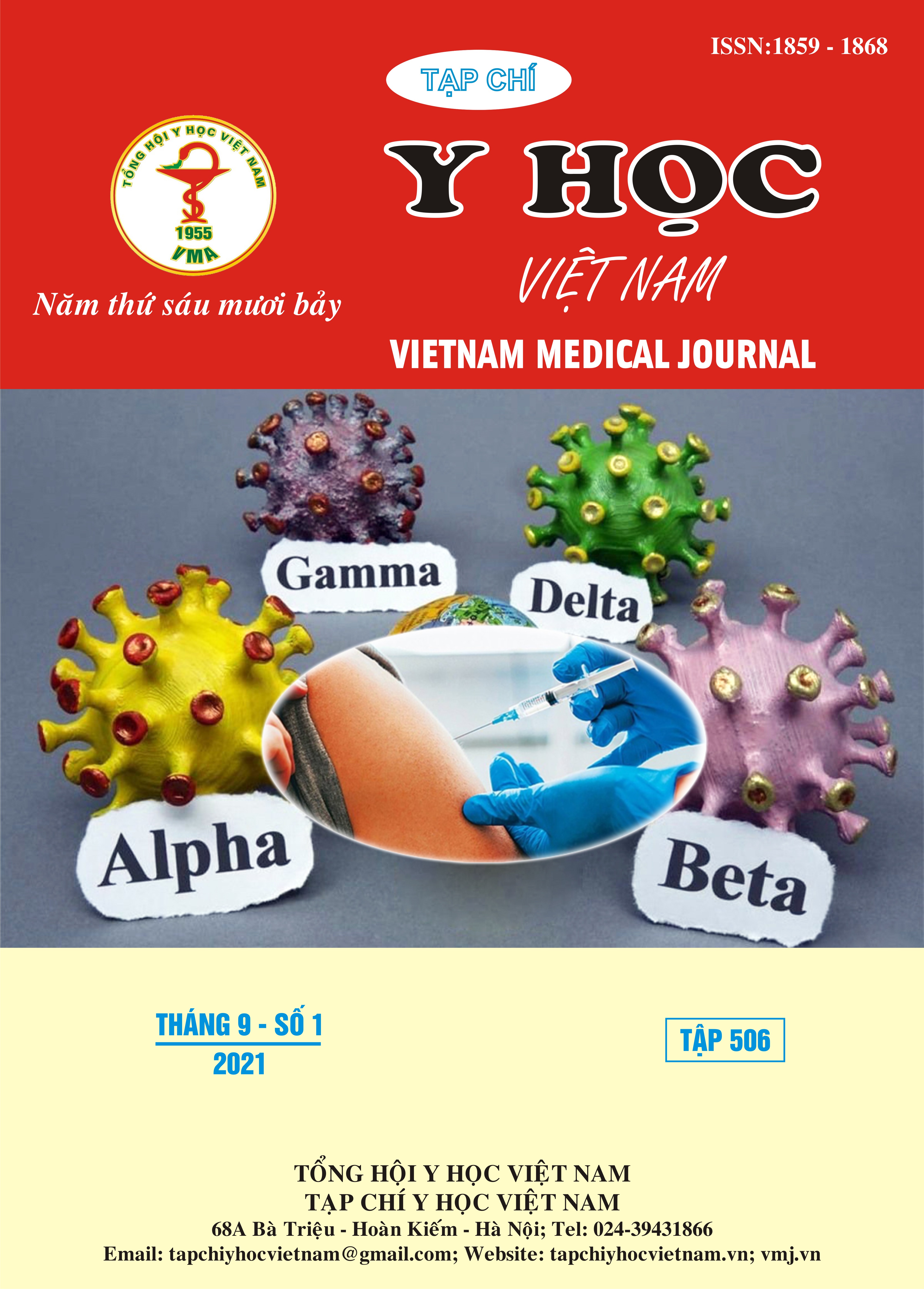MORPHOLOGY CHARACTERISTICS OF MAXILLARY IMPACTED CANINES WITH CONE BEAM COMPUTED TOMOGRAPHY
Main Article Content
Abstract
Aim: The objectives of this study were to describe morphology characteristics of maxillary impacted canines (impacted canine) with Cone Beam Computed Tomography findings. Subjects and methods: We conducted a cross-sectional descriptive study. CT Cone Beam images of patients with impacted canines were taken from DICOM (Digital Imaging and Communications in Medicine). Results: The prevalence of impacted canine in the female group (53.7%) was higher than the male group (46.3%). Most of subjects had solitary permanent canine (83.33%). The percentage of completed root was 63.5%, the percentage of impacted canine with the absence of deciduous canine was 57.1%. There was 55.6% impacted canine having 45 degree angulation to midline. Impacted canine locating buccally accounted for 73%. Impacted canine locating mesially to the midline accounted for 66.7%. There was 50.8% impacted canine locating distally from enamel-cement junction but below adjacent tooth’s apex. Impacted canine with pathological or abnormal condition accounted for 63.5%. Conclusions: Most of the impacted canines have complete root canals and most have no corresponding deciduous canines. The number of impacted canines with angulation to midline angle more than 45 degrees accounted for more than half of the cases studied. Most of the impacted canines located buccally and had mesially to the midline; the highest point of most impacted canines located distally to the enamel-cement junction and below the adjacent tooth’s apex;In the mesio-distal direction, most of the canines are mesial inclined. Most impacted canines have pathological or abnormal condition.
Article Details
Keywords
impacted canine, Cone Beam Computed Tomography
References
2. da Silva Santos L.M., Bastos L.C., Oliveira-Santos C. và cộng sự. (2014). Cone-beam computed tomography findings of impacted upper canines. Imaging Sci Dent, 44(4), 287–292.
3. Nguyễn Phú Thẳng (2012). Nghiên cứu phẫu thuật hỗ trợ quá trình chỉnh nha các răng vĩnh viễn mọc ngầm vùng trước. Luận án tiến dĩ chuyên ngành Răng hàm mặt, Đại học Y Hà Nội. .
4. Agnini M. (2007). The panoramic X-ray as a detector for preventing maxillary canine impaction. Int J Orthod Milwaukee, 18(4), 15–23.
5. Võ Trương Như Ngọc, Lương Thị Minh Hằng. (2014). Một số đặc điểm của răng nanh ngầm hàm trên trên phim CT Conebeam. Tạp chí Y học Việt Nam, 424, 124 - 129. .
6. Alqerban A., Jacobs R., Fieuws S. và cộng sự. (2011). Comparison of two cone beam computed tomographic systems versus panoramic imaging for localization of impacted maxillary canines and detection of root resorption. Eur J Orthod, 33(1), 93–102.
7. Motamedi M.H.K., Tabatabaie F.A., Navi F. và cộng sự. (2009). Assessment of radiographic factors affecting surgical exposure and orthodontic alignment of impacted canines of the palate: A 15-year retrospective study. Oral Surgery, Oral Medicine, Oral Pathology, Oral Radiology, and Endodontology, 107(6), 772–775.
8. Yan B., Sun Z., Fields H. và cộng sự. (2015). [Maxillary canine impaction increases root resorption risk of adjacent teeth: A problem of physical proximity]. Orthod Fr, 86(2), 169–179.


